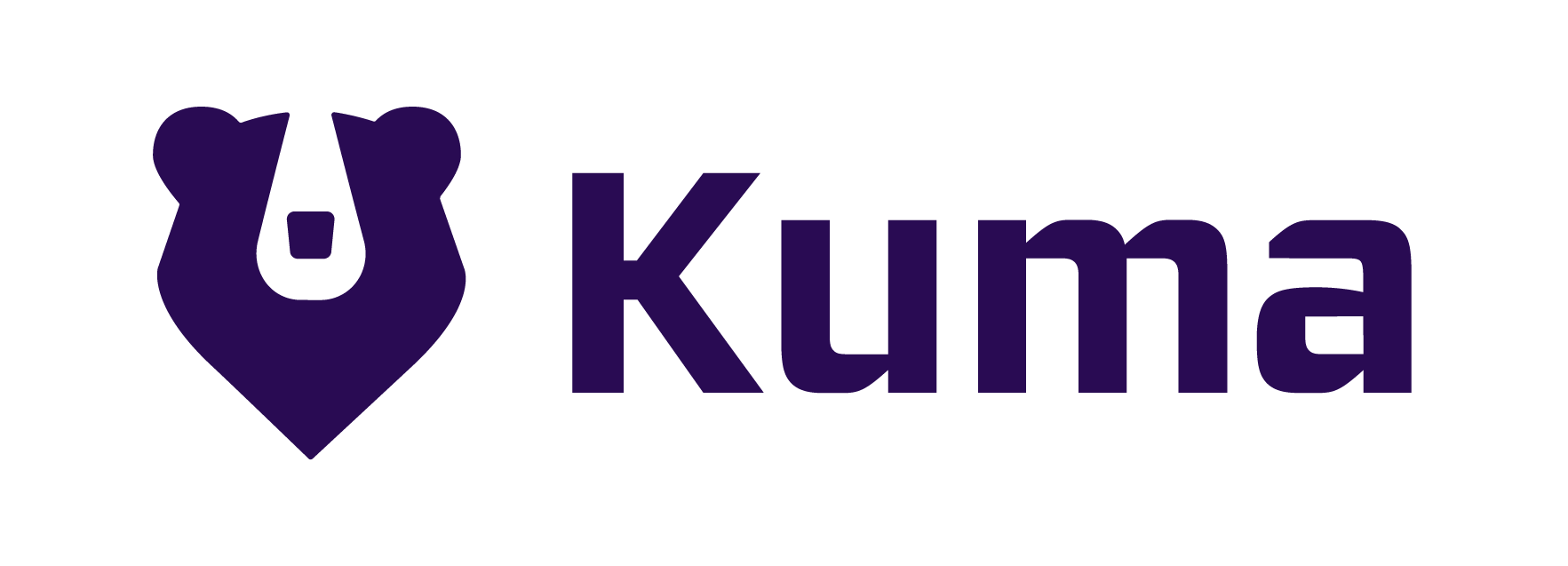kuma-counter-demo
 kuma-counter-demo copied to clipboard
kuma-counter-demo copied to clipboard
This is the counter demo for Kuma, that demonstrates the capabilities of the service mesh.
Kuma Counter Demo
Welcome to a sample application that demonstrates the Kuma service mesh in action. Kuma is designed to work across Kubernetes and VMs environments, with support for multi-zone deployments across many different clusters, data centers, and clouds.
To learn more about Kuma, see the Kuma repository.
Kuma is a CNCF Sandbox project.
Introduction
The application consists of two services:
- A
demo-appservice that presents a web application that allows us to increment a numeric counter - A
redisservice that stores the counter

The demo-app service presents a browser interface that listens on port 5000. When it starts, it expects to find a zone key in Redis that specifies the name of the datacenter (or cluster) that the current redis instance belongs to. This name is then displayed in the demo-app GUI.
The zone key is purely static and arbitrary, but by having different zone values across different redis instances, we know at any given time from which Redis instance we are fetching/incrementing our counter when we route across a distributed environment across many zones, clusters and clouds.
Run the application
-
Run
redis- (Kubernetes setup) on the default port
6379and set a defaultzonename:
redis-server redis-cli set zone local- (Universal setup) on port
26379and set a defaultzonename:
redis-server --port 26379 redis-cli -p 26379 set zone local - (Kubernetes setup) on the default port
-
Install and start
demo-appon the default port5000:npm install --prefix=app/ npm start --prefix=app/ -
(Only for Kubernetess) Navigate to
127.0.0.1:5000and increment the counter!
Run in Universal
- First we need to generate two tokens:
-
One for redis
-
Second for node-app To do so we need to run:
kumactl generate dataplane-token --name=redis > kuma-token-redis kumactl generate dataplane-token --name=app > kuma-token-app
- Then we need to generate two DPPs:
- For redis:
kuma-dp run \
--cp-address=https://localhost:5678/ \
--dns-enabled=false \
--dataplane-token-file=kuma-token-redis \
--dataplane="type: Dataplane
mesh: default
name: redis
networking:
address: 127.0.0.1 # Or any public address (needs to be reachable by every other dp in the zone)
inbound:
- port: 16379
servicePort: 26379
tags:
kuma.io/service: redis
kuma.io/protocol: tcp"
- And for app:
kuma-dp run \
--cp-address=https://localhost:5678/ \
--dns-enabled=false \
--dataplane-token-file=kuma-token-app \
--dataplane="type: Dataplane
mesh: default
name: app
networking:
address: 127.0.0.1 # Or any public address (needs to be reachable by every other dp in the zone)
outbound:
- port: 6379
tags:
kuma.io/service: redis
inbound:
- port: 15000
servicePort: 5000
tags:
kuma.io/service: app
kuma.io/protocol: http
admin:
port: 9902"
- Navigate to
127.0.0.1:5000and increment the counter!
Run in Kubernetes
Two different YAML files are provided for Kubernetes:
- one that installs the basic resources
- one that installs a version of the frontend service with different colors (useful to demonstrate routing across multiple versions, for example)
-
Install the basic demo resources in a
kuma-demonamespace:kubectl apply -f demo.yaml -
Port-forward the service to the namespace on port
5000:kubectl port-forward svc/demo-app -n kuma-demo 5000:5000 -
Navigate to
127.0.0.1:5000and increment the counter!
MeshGateway
An additional YAML file gateway.yaml is provided for setting up a
Kuma MeshGateway to
serve the demo app.
-
Install the
MeshGatewayresources:kubectl apply -f gateway.yaml -
If your k8s environment supports
LoadBalancerServices, you can access the gateway via its external IP:curl $(kubectl get svc -n kuma-demo demo-app-gateway -o=jsonpath='{.status.loadBalancer.ingress[0].ip}')Otherwise you can access the gateway inside the cluster via its cluster IP:
kubectl run curl-gateway --rm -i --tty --image nicolaka/netshoot --restart=OnFailure -- curl $(kubectl get svc -n kuma-demo demo-app-gateway -o=jsonpath='{.spec.clusterIP}')
Run v2 (Kubernetes)
To install the v2 version of the demo application, we can apply the following YAML file instead, which will change the colors and version number of our frontend application:
kubectl apply -f demo-v2.yaml
By inspecting the file we can see that the demo-v2.yaml file sets the following environment variables - which are also available on VMs - to different values so that we have immediate visual feedback that a new version is runnning.
Environment Variables
We can configure the following environment variables when running demo-app:
-
REDIS_HOST: Determines the hostname to use when connecting to Redis. Default is127.0.0.1. -
REDIS_PORT: Determines the port to use when connecting to Redis. Default is6379. -
APP_VERSION: Lets you change the version number displayed in the main page ofdemo-app. Default is1.0. -
APP_COLOR: Lets you change background color of thedemo-appmain page. Default is#efefef.
The APP_VERSION and APP_COLOR environment variables are handy when we want to create different versions of demo-app and get immediate visual feedback when routing across them.



